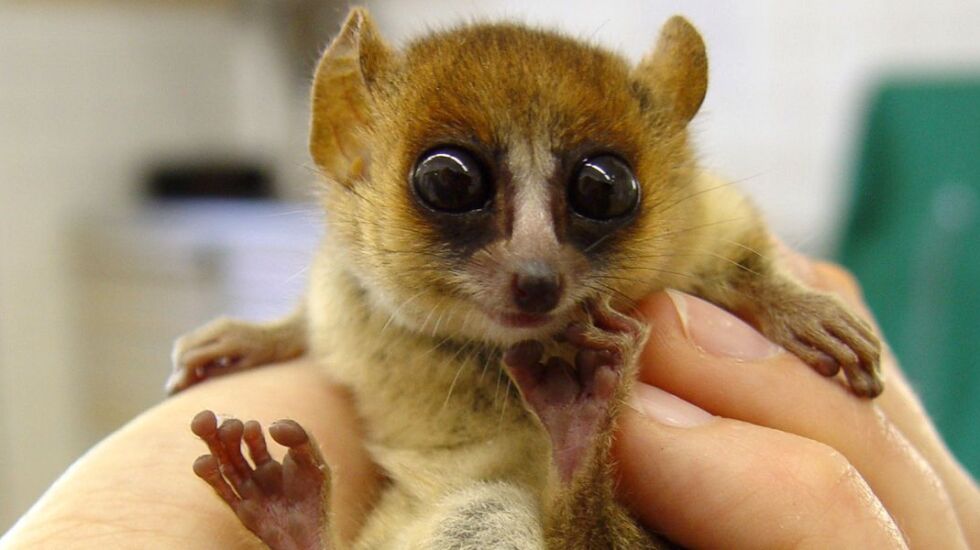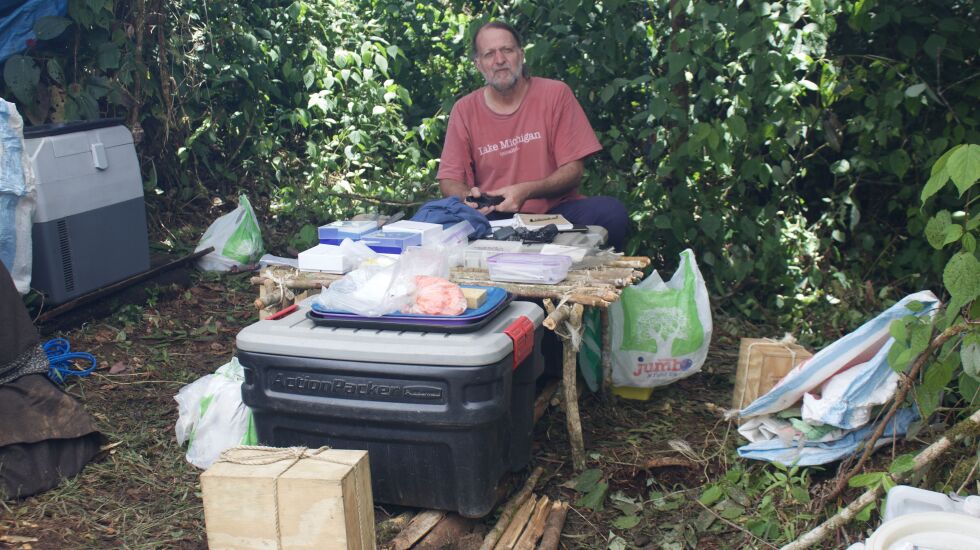
And when you do, chances are he won’t be there. After all, he’s hardly been there for most of the 35 years he’s worked for the renowned Chicago museum.
Of the museum’s 150 scientists, Goodman is the only one stationed full time in the field, save for trips to Chicago to bring back specimens.
For those three and a half decades, he has lived and worked in Africa in the island nation of Madagascar. Why? Because its isolation has made it one of the most biologically rich places on the entire planet.
“Four days after taking the job at the Field Museum, I went to Madagascar for the first time,” says Goodman, 65. “Put the boxes in my office, repacked, and off I went.”

Goodman is back in Chicago for a different reason this time. He’s promoting his new, 2,300-page, two-volume reference work “The New Natural History of Madagascar” (Princeton University Press, $175). It covers all manner of creatures found only there, everything from the Brookesia micra chameleon — the size of the head of a matchstick — to the whale sharks off the island’s northwest coast. Those sharks made a big impression.
“You’re next to one, and they come by you with this mouth the width of this office almost, and you can feel the suction of them swallowing all this water,” he says.
Goodman is from Michigan, but his accent now is hard to place. He wears his long, thinning hair back in a ponytail. In Chicago, he borrowed his grown-up son’s Nikes because most of the time in Madagascar he either goes shoeless or wears sandals.
“I didn’t want to invest in a pair of shoes for a two-week visit,” he says.
Madagascar is a little larger than France and sits about 250 miles off the coast of Mozambique in southeastern Africa. Its coastlines are fringed with mangroves and coral reefs. Its craggy spine is the result of millions of years of tectonic and volcanic activity. The land is parched in the southwest but drenched in the northwest during monsoon season.
The island also boasts a remarkable biodiversity, a result of its climate, varied landscape and geological isolation. About 150 million years ago, it pulled away from the rest of Africa, so species evolved there differently from elsewhere. For instance, there are at least 120 species of lemurs unique to Madagascar.

About 28 million people live in Madagascar, though some places, like the interior of Ankarana National Park in the north, are barely accessible. There, limestone has eroded into dagger-like pinnacles, with some passageways between them too narrow for people to squeeze through.
“It’s just this labyrinth of pinnacles and crevices,” Goodman says. “It goes on for kilometers.”
It’s places like these where he and other biologists set up their tents and work to capture species of birds, bats, lemurs — “basically everything with scales, feathers and fur,” he says. Much of what they find ends up in Chicago.
“There are places where you’re on your belly for 200 meters, with your back scratching the top of the cave, and you come into an area that’s the size of two football fields,” Goodman says of his searches for bats and fossils.
His wife Asmina is a native of Madagascar, and son Hesham is 20 years old. Before having a child, Goodman says he would spend as much as eight months a year living and working in Madagascar’s forests, the rest with his wife in the capital city Antananarivo.
Goodman gets antsy when he spends too much time in civilization, which his wife will prod him about.
“When I’ve been in town too long, she says, ‘Steve, I think it’s time to go back to the forest,’ ” he says.

Sara Ruane says she came to work as the Field Museum’s assistant curator of herpetology in 2021 partly because that meant she’d have the chance to work with Goodman.
“He works really hard from the time he wakes up to the time he goes to sleep,” says Ruane, who went to Madagascar last year to study snakes.
Long before sunrise, she’d see Goodman out checking mammal traps.
“He seems to exist on maybe four hours a night” of sleep, she says.
Madagascar can be a tough place to be from February through April, during the heart of the wet season, when the island is often battered by windstorms.
“Unless you’ve been in a cyclone, you can’t imagine the amount of water that can fall from the sky in a short period,” Goodman says. “Torrential rain. And continuing for hours and hours and days and days at a time.”
He says it took about three and a half years to complete the new reference book on Madagascar, for which he is the principal author and editor, corralling the work of about 500 contributors. His first work on the same subject, published in 2003, was short by comparison — only about 1,700 pages.
Pulling together a book in a pandemic turned out to have benefits, Goodman says.
“Normally, you would write to someone and say: We have this project in the works. Are you interested?” he says. “And they would say: Sorry, I am about to travel. Contact me in six months. People were very happy to have something to do at home while they were waiting for their universities to open.”
As with the specimens he brings back to Chicago each summer, Goodman sees the mammoth work as more than just a guide to all things Madagascar.
“The natural world is disappearing at an alarming rate,” he says. “Places like Madagascar, Borneo, the Philippines, Peru are kind of the last stalwarts of biodiversity. The onus is on the Field Museum and its staff to document what occurs today and try to use those data to advance questions in evolutionary biology and steps needed for conservation.”
Though their son is a student at the University of Iowa, Goodman and his wife have no plans to some day retire to the American Midwest.
He typically returns to Chicago for a few weeks each summer to drop off specimens and “assure my colleagues I’m still alive.”
Goodman says he prefers Madagascar’s rice-based cuisine and slower pace to big-city life.
Broken axles are common in Madagascar, he says, because of potholes “you can lose a truck in.” So Malagasy drivers typically carry two to three spare tires, he says.
In Chicago with his family till mid-January, he’s already looking ahead to the 26-hour return trip via Paris.
“My family says that the nicest thing about coming to Chicago is going back to Madagascar,” he says.







